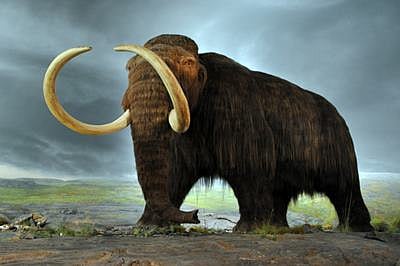London: The last woolly mammoths lived on Wrangel Island in the Arctic Ocean, and died out about 4,000 years ago owing to a combination of isolated habitat, extreme weather events and spread of prehistoric humans, according to a study unveiled on Monday. An international team, including researchers from the University of Helsinki in Finland, has reconstructed the scenario that could have led to the extinction of the ancient giants.
During the last ice age some 100,000 to 15,000 years ago, mammoths were widespread in the northern hemisphere from Spain to Alaska, the researchers said. Due to the global warming that began 15,000 years ago, their habitat in Northern Siberia and Alaska shrank, they said.
On Wrangel Island, some mammoths were cut off from the mainland by rising sea levels; that population survived another 7,000 years, according to the study published in the journal Quaternary Science Reviews.
The team, including researchers from Tubingen University in Germany and the Russian Academy of Sciences, examined the isotope compositions of carbon, nitrogen, sulphur and strontium from a large set of mammoth bones and teeth from Northern Siberia, Alaska, the Yukon, and Wrangel Island, ranging from 40,000 to 4,000 years in age.
The results showed that Wrangel Island mammoths’ collagen carbon and nitrogen isotope compositions did not shift as the climate warmed up some 10,000 years ago. The values remained unchanged until the mammoths disappeared, seemingly from the midst of stable, favourable living conditions.
In the new study, the team found an intriguing difference between the Wrangel Island mammoths and their ice age Siberian predecessors. The carbonate carbon isotope values indicated a difference in the fats and carbohydrates in the populations’ diets, the researchers said. “We think this reflects the tendency of Siberian mammoths to rely on their reserves of fat to survive through the extremely harsh ice age winters, while Wrangel mammoths, living in milder conditions, simply didn’t need to,” said Laura Arppe from the University of Helsinki, who led the team.
—PTI









